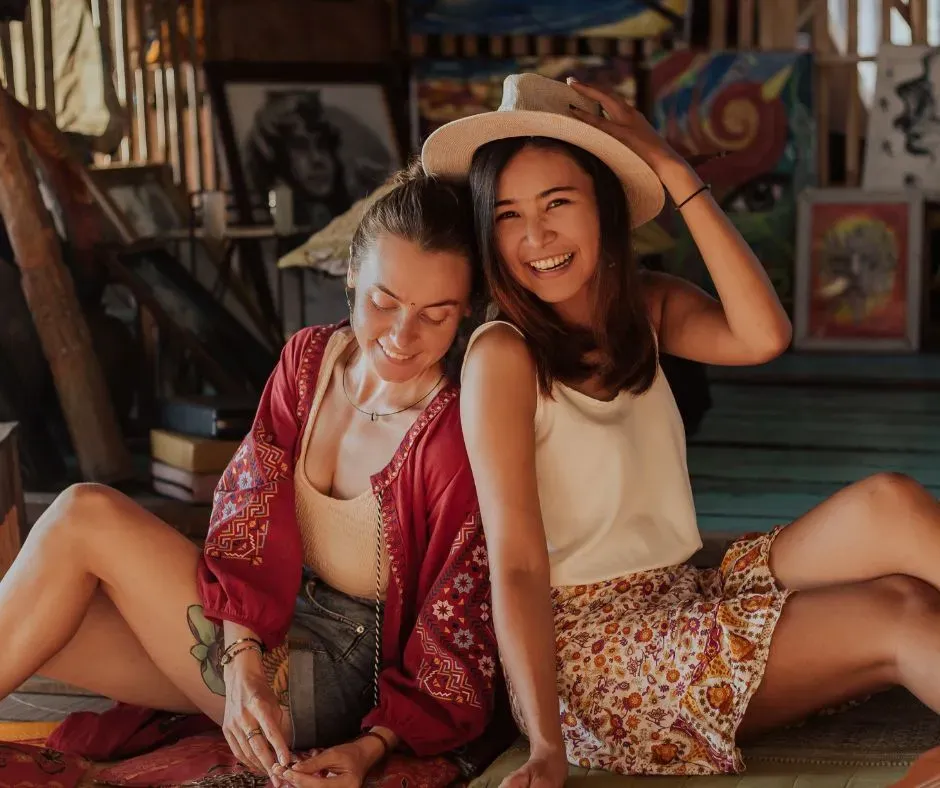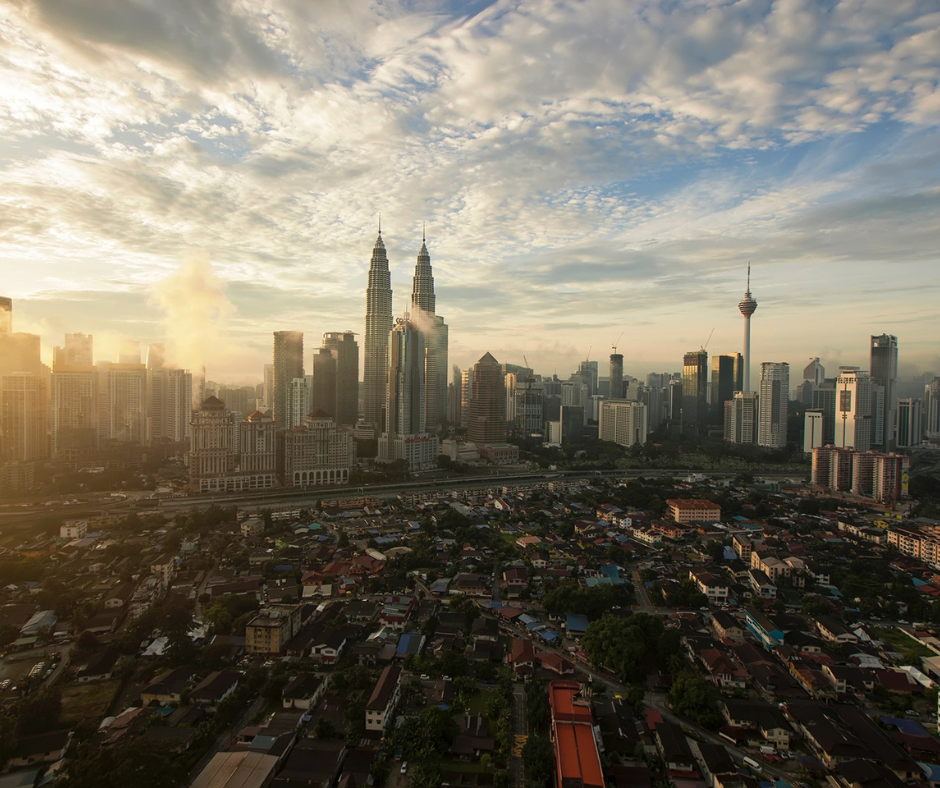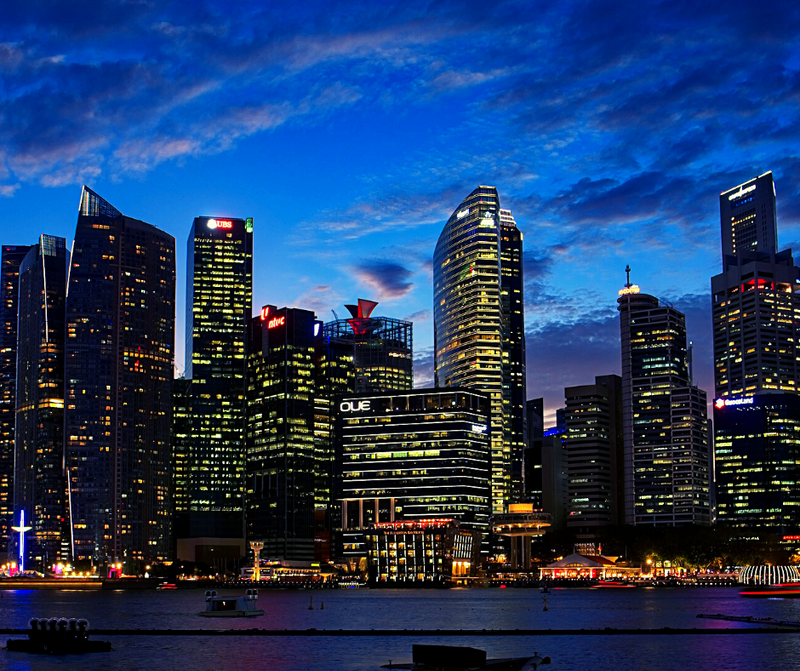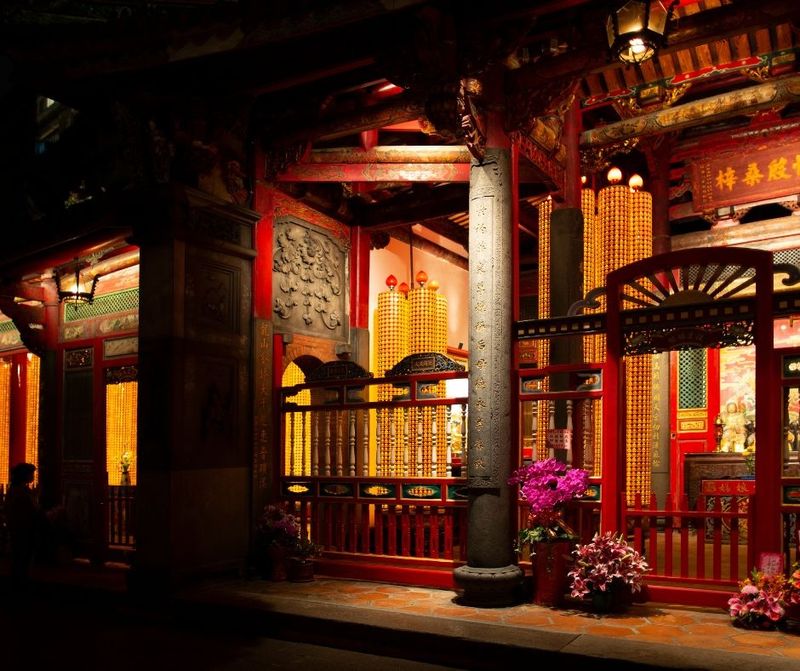[Last update: October 20, 2022] Singapore, founded by Sir Stamford Raffles in 1819 as a trading hub for the British Empire, counts a total of 63 islands and islets plus the main island. The island state lacks natural resources and a hinterland, which led the city to develop an extensive service industry, with leading sectors in finance, IT, health care, and external trade. It is one of the four Asian Tiger, together with South Korea, Hong Kong, and Taiwan, four countries with highly developed economies, a high ranking on Human Development Index, as well as high ranking GDPs.
Today's Singapore celebrates its rich cultural heritage in Little India, China Town, or Kampong Glam, and at the many cultural festivals held in the city. Multi-cultural influences are represented by the food scene, which is one of the best in the world with famous street food vendors and fine Michelin-star diners.
🌱 Travel health insurance for Singapore
🇸🇬 Entry requirements
- Valid visa: Apply for the visa before traveling. It takes around 3 business days to complete the process.
- Covid test: Proof of a negative COVID test result prior to your travels if you are not vaccinated.
✈️ How to get to Singapore
- Plane: Singapore’s Changi Airport is home to Singapore Airlines, the flag carrier of Singapore. Located 19 km away from the city center, Singapore Changi Airport is one of the busiest and best-connected airports in the world, handling over 100 airlines flying to some 400 cities.
- Car: Driving into Singapore is only available from West Malaysia. It is a relaxing and scenic way of getting here. Singapore has two land checkpoints, one at Tuas in the west and the other one in Woodlands in the north, that operate 24 hours a day.
🚌 Public transport
Singapore is a modern city with an extensive network of metro and buses. Get the Singapore Tourist Pass which you can purchase at any TransLink ticket office.
- Metro: The MRT subway system is extensive, clean, efficient, inexpensive, and easy to understand – everything you want from public transit. Maps are available at every station. Get a Singapore Tourist Pass (STP), a special EZ-link stored-value card that will allow you unlimited travel for one day. The pass can be bought at the TransitLink Ticket Office at selected MRT stations.
- Bus: Taking the bus in Singapore is another good, affordable, clean, and safe way to get around. You can pay for the bus fare with the Singapore Tourist Pass (STP).
- Taxi: You can find taxis everywhere in the city. Providers are CDG, SMRT, Premier, Prime, and TransCap. Most drivers will speak English, so be sure to chat with them for local tips. The base fare is 2.15 Euro to 3.60 Euro (3 SGD to 5 SGD). The additional price/km is 0.16 Euro.
- Grab: The ride-hailing app is the most popular one in Singapore.
- Cycling: Singapore has dedicated bike lanes and cycling paths.
🏡 How to find a place
- Airbnb: Singapore does not experience the typical four seasons. The city-state climate, however, has two monsoon seasons that affect the prices of accommodation. The northeast monsoon is from December to early March and the rent for an apartment during that time is around 2,600 euros per month. The southwest monsoon is from June to September and the rent during this period is 2,100 per month. Airbnb is a great option to check out short-term stays.
- Nomad Rental: Nomad Rental is a popular website among nomads in Singapore. Nomad Rental provides affordable apartments, flats, and houses.
- Coliving: As a top city for digital nomads, there are numerous coworking spaces around Singapore. Cove is one of the popular coliving spaces in the city. They specifically target younger folks, and everything from check-in to moving out is handled online. They also have plenty of locations across Singapore to choose from.
🏘 Where to stay
- Marina Bay: The area is one of the more pricier neighborhoods to stay, with an average cost of living between 2,100 and 2,800 Euro a month. Marina Bay is a recommended neighborhood because it is one of the prettiest and the most desirable for tourists. Marina Bay is for you if you have limited time to stay in the city but be sure to prepare some cash because accommodation prices are quite pricey.
- Little India: A more affordable neighborhood is Little India, with an average cost of living between 1,800 and 2,400 Euro a month. Little India is just by the east of the Singapore River, which means it is directly across from Chinatown. Cheap hostels and budget apartments are located here.
🧑🏻💻 Where to work from
Coworking spaces
- The Hive Carpenter: The Hive Carpenter in Marina Bay is a flagship space in Hive network, offices ranging in size up to 20 people, hot desks, dedicated desks, fully equipped meeting rooms plus a rooftop café with views of Marina Bay are all included. Memberships is from 20 Euro a day to 275 Euro a month for a hot desk.
- JustCo at Marina Square: JustCo in Marina Bay is a leading provider of creative and flexible coworking spaces. This coworking space is situated at level 3 of Marina Square Mall and counts more than 1,000 members. Operating hours are from Monday to Friday between 8:30 am to 6 pm, and the monthly membership is 270 Euro.
- Co.@Duxton: The Co. is a modern coworking space in Little India with a work-and-play attitude catering to local and international entrepreneurs, freelancers, and remote working nomads. A day pass is 32 Euro, and the monthly pass is 250 Euro.
Coffee shops
- Wakey Wakey: From the creator of Strangers' Reunion and Curious Palette, this open concept café has got natural light, a spacious interior, and a national barista champion who is making fine coffee art for you. Also, Wakey Wakey in the Marina Bay area is a good place to work from.
- Old Hen Coffee Bar: Old Hen Coffee Bar is a favorite haunt among cold brew lovers. If you are looking for fast wifi, exceptional coffee, cool, work-friendly vibes, this minimalistic and yet stylish place in the Marina Bay area might be the right fit.
- SYIP: This all-white café in Little India is designed with subtle curves and raw concrete accents, haloed with serene light from the large skylight. If you like your surroundings as distraction-free as possible, this coffee shop might be your new favorite.
- Botany: This garden-themed café in Little India comes with comfy couches, and chairs in yet minimalistic urban design. The baristas do great jobs in making you a tasty cup of coffee, plugs, internet, and tables to work from make this spot perfect.
- Genius Central: Genius Central is well-known amongst people who thrive in coworking spaces and Genius Central is open to anyone who would like a quiet space to work at. you’ll find nearly one socket for every seat scattered around this sprawling workspace.
- The Ritual: The cafe is located in a quiet corner of Bukit Timah, making it an ideal location if you are hoping to escape the crowds and get some work done in a quiet area. Besides comfortable workspaces, with free wifi, the cafe is almost always filled with people hard at work.
🧑🏻💻 Where to work from in Sentosa Island
Coworking spaces
- WeWork: This international operating coworking chain caters to all kinds of entrepreneurs, freelancers, workers, and businesses. With 14 locations in Singapore, they have a variety of membership options too. A monthly hot desk is 350 Euro.
Coffee shops
- The Book Cafe: The Book Cafe is a well-established institute for digital nomads. This peaceful, intimate, and cozy café offers the perfect hangout to get work done surrounded by books. They offer food too to get you fueled.
🚊 How to travel around Singapore
- On foot: Singapore is a large city, which makes it difficult to explore entirely on foot. However, you'll want to walk through individual neighborhoods to absorb the local atmosphere and sights. Visitors centers, run by the Singapore Tourism Board, provide free street maps and suggested walking tours. The city's numerous parks are another place to stretch your legs.
- Bicycle: Cycling around Singapore is a great way to get your dose of vitamin D and enjoy the green spaces that dot the city. Singapore boasts a well-connected network of cycling paths, and you can rent shared bicycles from licensed operators.
- Taxi: You can hail a taxi by the roadside at most places, or by queuing for one at a taxi stand, which you’ll find at most malls hotels, and attractions.
- Bus: Singapore's bus system has an extensive network of routes covering most places in Singapore. Besides being an economical way to get around, it’s one of the most scenic — you’ll be able to indulge in air-conditioned comfort, as you admire the lush greenery and beautiful architecture of the city.
- Singapore’s MRT: Singapore’s MRT is probably the fastest way to zip around the city. Most of our popular attractions are just a short walk away from an MRT station, making the trains a great way to get around.
🎖 Must see
- Singapore Botanic Garden: Lauded as a UNESCO World Heritage Site in 2015, this garden has a history of over 150 years since its founding in 1859. Highlights with The National Orchid Garden, which boasts the world’s largest orchid display, with over 60,000 plants and orchid plants. This garden also has been a favorite recreation venue for jogging, dining, or just lazing about for the locals and expats.
- Gardens by the bay: Gardens by the bay is a design achievement that should not be missed by anybody who sets foot in Singapore. Gape in wide-eyed wonder at every dome and garden feature, you can enjoy free access to the skywalk and see the gardens from above!
- Bumboat: A bumboat refers to a small boat or water taxi that is used for quick transport and river tours. It's the cheapest and fastest way to see the stunning sights of downtown Singapore and landmarks along the way, including The Merlion, and Marina Bay Sands.
- Chinatown: Singapore’s Chinatown is a delightful mix of old and new in the city’s central area. Chinatown offers a distinct Chinese charm that cannot be found in other areas in Singapore, and there are plenty of attractions you could find there if you’re hungry head to the hawker stalls and gorge on mouthwatering street food.
- Sands SkyPark: The Sands SkyPark observation deck is a popular tourist attraction that overlooks Singapore from the top of the iconic Marina Bay Sands, and offers a spectacular 360-degree view of Singapore with guided tours conducted daily on a first-come, first-served basis. Highly recommended to go in the afternoon to catch the sunset and witness the transformation of Singapore from a bustling city by day to a dazzling metropolis at night.
💡 Good to know
- Internet: One of the best things in Singapore is internet speed. With an average light speed of 194 Mbps, download, and 164 Mbps upload Singapore is a paradise for productivity.
- Sim card: Getting a sim card in Singapore is easy but choosing the best option is hard. Eva from Trevallog wrote a recent post with a detailed breakdown of each sim card. It is a great source.
- Digital nomad community: Many people in Singapore hop in for a few days and then continue to other parts of the world. Whenever I am in Singapore, the average answer to how long someone is here is a couple of days. But digging a bit deeper, maybe by joining a coworking space or a gym, you will meet locals and long-term expats. Additionally, have a look at meetup.com, Eventbrite, or Facebook groups for digital nomads/expats for local events, workshops, and parties.
- Coworking spaces: Check out the app Workbuddy, Singapore's largest coworking space network with more than 35 spaces. The average monthly membership costs around $250 to $290 (US dollar) which makes Singapore pretty expensive for southeast Asia, but hey - with that light speed of internet, maybe you can just work from your accommodation?
- English: English is widely spoken in Singapore and you won't have any language problems.
- Quality of life: According to international rankings, Singapore promotes itself as one of the best places to live in. A study by Mercer shows that Singapore ranks 5th after Auckland (1), Sydney (2), Wellington (3), and Melbourne (4). I find it difficult to generalize. The country is definitely safe, with a low crime rate, politically stable, a nice climate if you like the tropics, and a high level of professional services in hospitality, IT, public transport, or housing. However, Singapore comes with a lot of laws (no chewing gum and other rules), no freedom of speech, and a low ranking toward LGBTQ-friendliness. I could do Singapore for a couple of days but then I would go nuts with all that regulations. All these laws drop the fun and freedom factor for me drastically.
- Climate: Singapore's climate is divided into a dry season between March and August and a wet season between September and February.
- Safety: The safety index for Singapore is 1.35, which makes the county as safe as Canada or Japan.
- Must-visits: Gardens by the Bay including Cloud Forest, Bukit Timah Nature Reserve, Kampong Gelam with its hip eateries, boutiques, and vintage stores - especially in Haji Lane. Spend the afternoon at the National Gallery Singapore, or enjoy high tea at The Raffles, the historic hotel built in 1887, and end the day with a cocktail at the ATLAS.
- Food: Gourmandize in Chinatown, Little India, and Arab Street - three colorful, diverse, and authentic neighborhoods of Singapore. Little India is a vibrant area for shopping, and Arab Street in Kampong Glam is my favorite place to eat. You also should eat in one of the traditional hawker centers, for example, Lau Pa Sat or Amoy Street food. Check out A Noodle Story.
- Reserving a table: If you are in a hawker center and you found yourself a table but you need to go and choose and get the food, you can simply place a personal item on your seat or table to mark it, for example with your water bottle, a pack of tissues, an umbrella or similar. On the other hand, if you see an umbrella or a water bottle on a table, this seat or table is reserved and you should look out for another available table.
- Cleanliness: Singapore is a very clean city. You are not even allowed to import chewing gum and you will not find one shop in Singapore selling it. However, make sure to adapt to the customs: Keep seats and tables clean, use public trash bins, and recycle if different bins are provided. Littering is fined $1,000. Take off your shoes when you enter a local home as bringing in outside dirt is seen as extremely rude.
🚧 What to avoid
- Tipping: Tips are already included in the Goods & Service tax and there is no need to tip waiters and other professionals.
- Food & drinks on public transport: Don't eat your takeaway meal on public transport. It is not just illegal, locals find it rude, too. This includes coffee-to-go, too.
- Smoking in public: Smoking is not illegal in general, but if you do smoke, you need to go to a designated smoking area otherwise you could face a fine of $1,000. You are not allowed to smoke in public, such as parks, metro gates, or bus stops. Smoking is also prohibited in outdoor spaces in restaurants. When smoking in a smoking area, never throw the cigarette butt on the floor, you would be fined $1,000 for littering. Additionally, you are not allowed to import cigarettes to Singapore.
- Alcohol consumption: It is prohibited by law to consume alcohol after 10:30 pm outside or in a public space. Additionally, you can buy alcohol only in special shops. Best to have your beer or cocktail in a pub or bar.
- Confuse left and right: Singapore is a left-side driving culture, the same as Australia or UK. Therefore, when using the escalator, stand left and make space on your right side for people passing.
🚴🏻♀️ How to stay healthy
Stay active
- Gym: You find a huge variety of gyms in Singapore, and it is hard to decide where to sign up. I found this guide online that might help you to find your way through the fitness jungle.
- Sightseeing tour: If you are down for a self-organized walking tour, check out these routes from the Singapore Tourism Board. For guided tours, Singapore offers a colorful palette of themed walking tours, check out Indie Singapore.
- Walk the Rail Corridor: The 4 km long trail stretches along the former railway that connected Singapore with Malaysia. In 2011 the railway closed its operation and was rebuilt for outdoor purposes. Along the way, you will pass the old Bukit Timah Railway Station and two steel railway bridges which come in green nature settings and views.
- Walk at the MacRitchie Reservoir: Depending on which trail you choose, you can walk on 3 to 11 km long trails. The majority of the paths are boardwalks leading you through the primary and secondary remaining forest. The highlight of MacRitchie is the HSBC Tree Top Walk, a 250 m aerial free-standing suspension bridge spanning Bukit Peirce and Bukit Kalang which are the two highest points in MacRitchie.
- Mountain bike the Wallace trail: Muddy paths and nature setting is given along the Wallace trail. You find separate walking, running, and mountain biking trails.
Health risks
- Water quality: Singapore's tap water quality is well within, and the water is suitable for drinking directly from the tap without any further filtration.
- Air quality: The air quality in Singapore is good. Moderate 63 US AQI and the PM 2.5.
⚓️ Long stay visa & residency
Digital nomad visa: Unfortunately, Singapore does not have a Digital Nomad Singapore Visa. A regular Singapore tourist visa is valid for a period of 30 days. Once the visa expires, tourists must exit the country as per the immigration rules.









